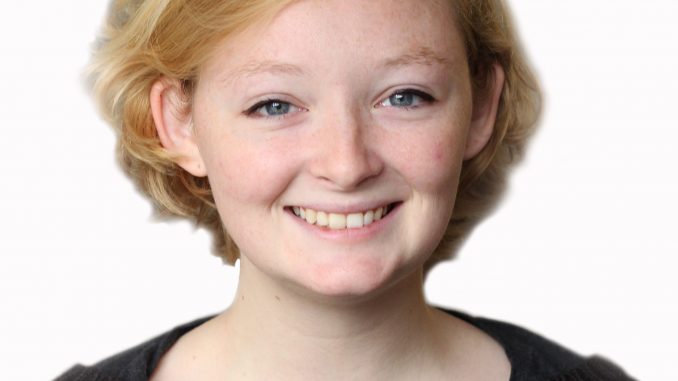
 I couldn’t tell if I was caught in a mid-afternoon September shower or sitting under a leaky pipe. My old pair of glasses were speckled with water and what looked like flaking skin. I looked up—the sun was bright, the sky was all but clear and no other spec-wearing comrade seemed to be bothered.
I couldn’t tell if I was caught in a mid-afternoon September shower or sitting under a leaky pipe. My old pair of glasses were speckled with water and what looked like flaking skin. I looked up—the sun was bright, the sky was all but clear and no other spec-wearing comrade seemed to be bothered.
I sat between two food trucks on 13th street next to Beury Hall when the answer to my afternoon folly quite literally smacked me in the face. Dust, water vapor and soot from the demolition of Barton Hall across the street was blowing directly into my eyes—thankfully shielded by my glasses—as I waited for my lunch.
I was equally damp as I was curious about whether the air we’ve been breathing this fall on Main Campus has been harmful. Surely the dust and chemicals from Barton’s days of science research and testing still remained between its walls?
I got closer to the demolition, which has been kicking up dirt since August, and could see the crane spraying water vapor as it tore down a section of the former science building—presumably to keep the dust from blowing into the air inhaled by anyone traveling down the length of 13th Street or Liacouras Walk.
The Office of Sustainability connected me with the Clean Air Council, an environmental nonprofit in Philadelphia that monitors air quality throughout the area.
On Tuesday, Sept. 15 at 11 a.m. I went to the same spot, between the two food trucks, with the AirBeam which filters the air, tests for humidity, sound, temperature and particle matter, all while graphing and mapping the information through an Android app.
Particulate matter—also called particle pollution or PM—is “inhalable coarse particles,” with diameters larger than 2.5 micrometers and smaller than 10 micrometers, according to the EPA’s website on common air pollutants. This pollution can contain acids, organic chemicals, metals, soil and dust particles. Common examples include dust, soot, smoke, water vapor, sand and strands of hair.
According to the EPA, particles smaller than 10 micrometers “pose the greatest problems, because they can get deep into your lungs, and some may even get into your bloodstream.” Other symptoms of overexposure to particulate matter include coughing, wheezing and decreased lung function in otherwise healthy children and adults.
I circled the demolition site while testing, starting on 13th Street next to Beury Hall. There I received peak readings and the highest other consistent readings while demolition was in process. I noticed dust and water vapor flying in the air, students waving soot from their eyes and construction workers wearing hard hats, protective glasses and breathing masks.
At the intersection of Polett Walk and 13th Street I also received high ratings, based on how hard the wind was blowing. Particulate matter dipped when I stood next to Alumni Circle, Liacouras Walk next to Saxbys Coffee and Norris Street next to Peabody Hall.
Air quality testing is a tricky business, Engineering and Technical Coordinator at the Clean Air Council Karl Koerner said. Humidity, temperature, traffic, time and location can all significantly impact a reading, making it hard to receive consistent and reliable data.
“Even if you observe large plumes of dust or bad smells in the air, that’s a valuable observation,” Koerner said. “I think that just sort of seeing, ‘OK now that you know this about your health and how it’s affecting you, how do you want to go about this so you have options?’”
When there’s demolition, there’s bound to be consequences not only in air quality but also in noise, traffic and inaccessibility for walkers and bikers on 13th Street, especially during times with high foot traffic. The air quality data I collected was not exactly alarming—air quality on campus, in terms of PM, is within the “good” to “moderate” categories in the air quality index, according to the Clean Air Council and EPA. Understandably, my readings were highest during demolitions, but students were crossing the street, waiting for lunch and biking down 13th Street during those times.
Dozie Ibeh, assistant vice president for the Project Delivery Group, said the project couldn’t start over the summer, a seemingly obvious time for the demolition to do most of the heavy lifting. Beginning in March, occupants of Barton were relocated to the Science Education and Research Center and other buildings. The largest of these projects cost the university more than half a million dollars. There were six projects completed before Barton could be cleaned of asbestos and other “hazardous material,” Ibeh said.
Since demolition began last month, Ibeh said the university and the demolition has been in compliance with state standards for safety precautions, methods of hosing down dust, fencing the site, inspections, barriers and using flag personnel around the perimeter. Air quality monitors also routinely test for anything alarming in the air like lead and carbon monoxide.
Even with the less-than-alarming evidence at the demolition site, it’s truly up to the student body, faculty, administration and neighbors of the university to use social science projects as a springboard to better not only air quality but other issues like idling cars, recycling and trash pickups.
“I think that it’s really up to the community,” Koerner said. “It’s about getting everyone involved, getting a community involved and taking their own health into their own hands.”
Emily Rolen can be reached at emily.rolen@temple.edu or on Twitter @Emily_Rolen.



Be the first to comment